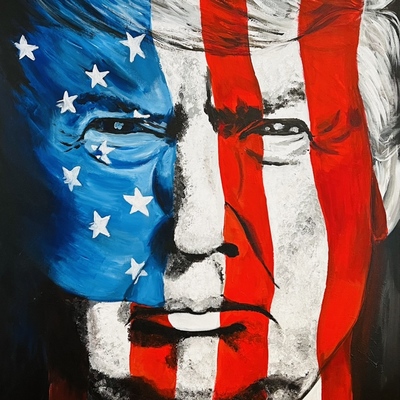Stay informed on the latest Truth Social posts from Donald Trump (@realDonaldTrump) without the doomscrolling. Consider it a public service for your mental health. (Why?)
- The United States and the Philippines have a strong, committed trading relationship.
- The United States has a significant, long-term, and persistent Trade Deficit with the Philippines.
- The trade deficit is caused by the Philippines' Tariff and Non-Tariff Policies and Trade Barriers.
- The trade relationship between the US and the Philippines is 'far from Reciprocal'.
- Starting August 1, 2025, the US will charge a 20% tariff on all Philippine products imported into the United States.
- Goods transshipped to evade higher tariffs will be subject to the higher tariff.
- The 20% tariff is presented as 'far less than what is needed to eliminate the Trade Deficit disparity'.
- If the Philippines raises its tariffs, the US will add an additional 20% onto its existing charge.
- The US invites the Philippines to participate in the 'extraordinary Economy of the United States' and build or manufacture products within the US.
- The US will expedite approvals for companies deciding to build or manufacture products within the United States.
- The trade deficits are 'unsustainable' and pose a 'major threat to our Economy and, indeed, our National Security!'
The letter details a specific future tariff imposition (20% on all Philippine products) by August 1, 2025, and threatens further increases if the Philippines retaliates. This signals an aggressive protectionist trade policy that could disrupt supply chains, impact import costs for US businesses, and potentially lead to retaliatory tariffs from the Philippines or other nations. Such actions create uncertainty for multinational corporations, affect corporate earnings, and could trigger broader concerns about global trade stability, which negatively impacts investor sentiment.
The post outlines economic measures (tariffs) to address trade imbalances. It does not contain direct military threats, ultimatums beyond economic policy, or references to international conflict escalation. The rhetoric is focused on economic nationalism and trade reciprocity.
- Commodities: Gold (XAU) may rise as a safe haven if global trade uncertainty escalates. Oil (WTI) could be indirectly affected by concerns over global growth. Industrial metals like Copper may decline due to potential slowdowns in manufacturing activity. Short-Term Watchlist: XAU/USD price action, headlines on trade negotiations/retaliation. Medium-Term Focus: Inflationary pressures from tariffs, global economic growth outlook.
- Currencies (Forex): The US Dollar Index (DXY) could strengthen as capital flows to a perceived safe haven amidst global trade uncertainty, or weaken if the policy is seen as damaging to US economic growth. Currencies of trade-reliant nations, particularly in Asia, such as the Philippine Peso (PHP), may depreciate against the USD. Short-Term Watchlist: DXY movements, USDPHP pair, regional Asian currencies. Medium-Term Focus: Central bank policy responses to trade-induced inflation or slowdowns, global risk appetite.
- Global Equities: S&P 500 may experience downward pressure due to concerns over corporate earnings (especially multinational corporations and import-reliant sectors) and broader economic growth. Asian markets (e.g., Nikkei 225, Hang Seng, Philippine stock exchange) would be particularly vulnerable. Sectors heavily reliant on international trade or specific supply chains involving the Philippines could see a negative impact. Short-Term Watchlist: Futures open, VIX spike, performance of consumer staples, technology, and manufacturing sectors. Medium-Term Focus: Earnings revisions, manufacturing PMIs, global capital flows.
- Fixed Income (Bonds): US 10Y and 2Y yields could fall as a flight to safety increases demand for US treasuries, or rise if trade wars are perceived as inflationary requiring tighter monetary policy. Credit spreads might widen if economic uncertainty increases. Short-Term Watchlist: UST 10Y yield levels, flight-to-quality indicators. Medium-Term Focus: Federal Reserve policy expectations, inflation outlook.
- Volatility / Derivatives: The VIX could spike due to heightened market uncertainty and increased risk aversion stemming from trade policy and potential economic slowdowns. Short-Term Watchlist: VIX levels, options market implied volatility. Medium-Term Focus: Macro policy uncertainty, geopolitical risks impacting trade.
- Crypto / Digital Assets: Bitcoin (BTC) may behave as a risk-on asset, correlating with technology stocks, or as a macro hedge if broader markets experience a flight to safety. Regulatory developments related to international finance could also influence the market. Short-Term Watchlist: BTC/USD correlation with equities, crypto market sentiment. Medium-Term Focus: Macro liquidity conditions, investor risk appetite.
- Cross-Asset Correlations and Systemic Risk: A breakdown in normal correlations might be observed if trade uncertainty leads to broad risk-off sentiment. Potential for liquidity stress could emerge if global trade contracts significantly. Short-Term Watchlist: MOVE index, junk bond ETFs, intermarket correlations. Medium-Term Focus: Central bank responses, global liquidity conditions.
- Retail Sentiment / Market Psychology: Increased policy uncertainty and nationalist rhetoric could trigger shifts in retail sentiment, potentially favoring domestic-oriented investments or sectors perceived as resilient to trade disputes. Short-Term Watchlist: Social media trends related to trade and economic nationalism. Medium-Term Focus: Public perception of economic policies, impact on consumer confidence.

